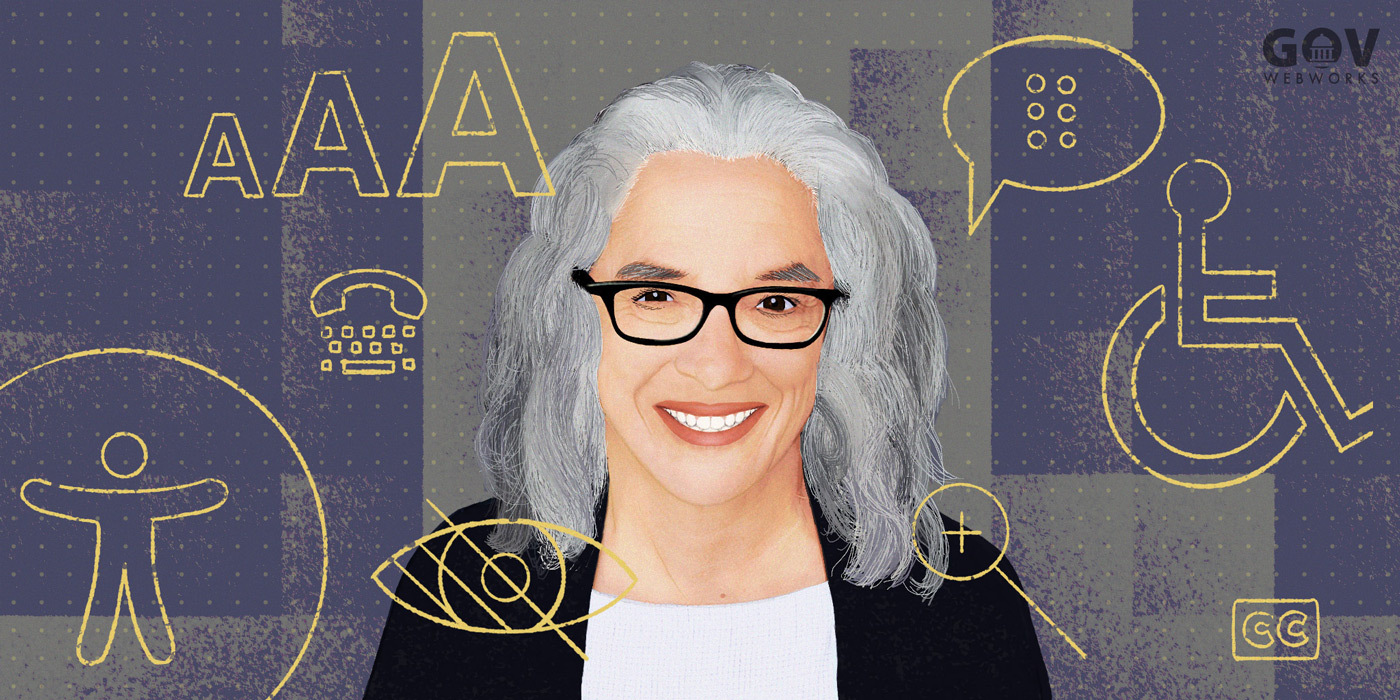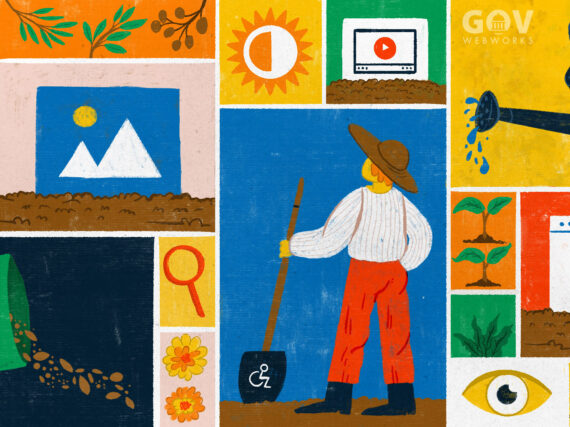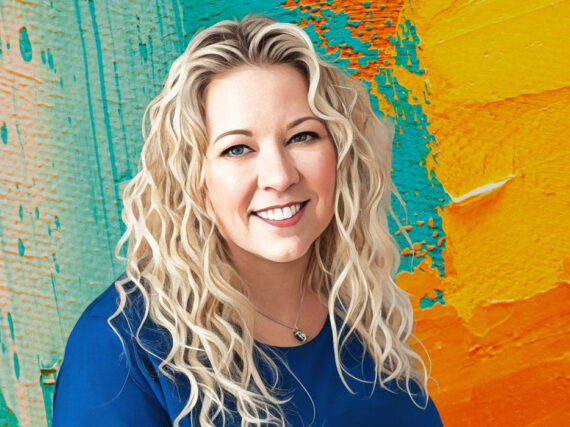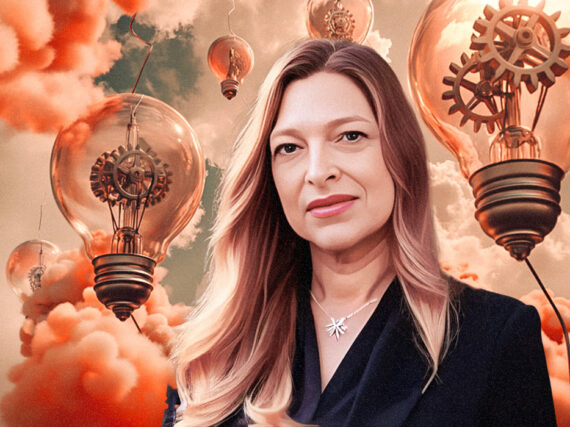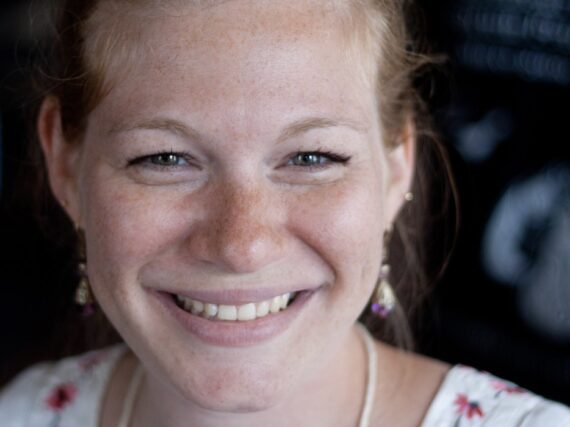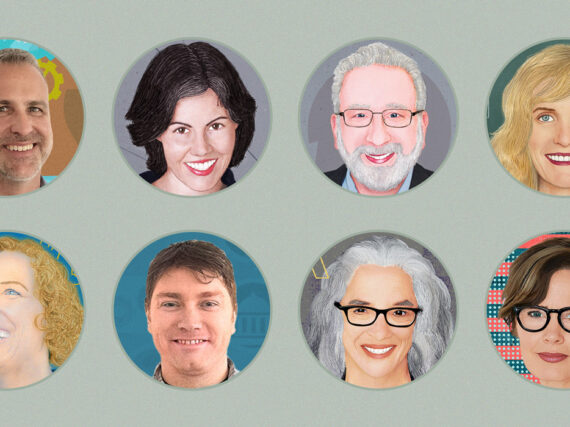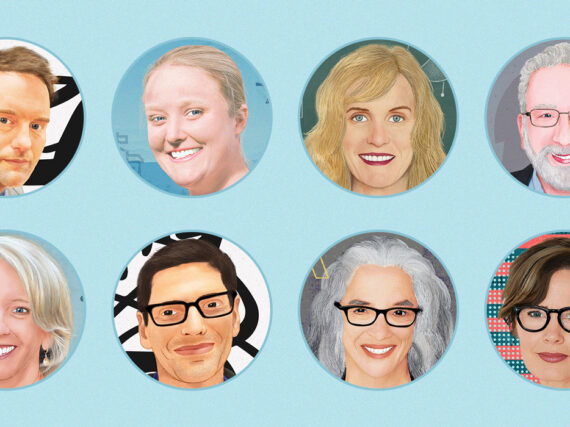When Lainey Feingold took a temporary post at the Disability Rights Education and Defense Fund in 1992, she never realized it would lead to her life’s work. A lawyer by profession, she was asked to help a group of blind disability rights advocates collaborate with banks to develop Talking ATMs. A few years later, when the country’s first Talking ATMs were getting ready to be rolled out, one of her blind clients said, “Good job with the ATMs, but now we can’t use this new thing called online banking.”
That led to her first web case in 2000, when she and her clients and co-counsel negotiated with Bank of America to adopt the new Web Content Accessibility Guidelines (WCAG). The rest is accessibility rights history and led to her first book, now in its second edition, Structured Negotiation, A Winning Alternative to Lawsuits, on how to adopt her unique approach to negotiated settlement agreements.
“I practice collaborative law, which in the digital accessibility space we call Structured Negotiation,” Lainey explains. “It’s a very client-centered type of law. The first step is to write a letter and tell people’s stories about the disability barriers encountered. Each success we’ve had is attributed to the people we work with in the disability community.”
We asked her how she developed her approach and what agencies can do to embrace accessibility for their teams and online tools.
How can organizations avoid accessibility lawsuits?
Don’t wait until you get someone knocking at your door with a problem. Instead, start hiring people with disabilities front and center until you have good representation in your organization. You can also partner with disability organizations, see the resources page on my website.
We need to change the culture to understand that people with disabilities are in every aspect of the work, not just as consumers, but as creators, employees, and decision makers.
You cannot have diversity, equity, inclusion, and belonging without including people with disabilities. It’s not just that people with disabilities deserve a seat at the table, disabilities are cross cutting. If you embrace racial, gender, LGBTQ+ and other types of diversity, disability is already at the table because disability is a quality of the human experience. And you can’t have diversity without including accessibility because accessibility makes it possible for everyone to participate in the digital world at work, in public, in the marketplace.
Why has Structured Negotiation been so successful in building accessibility rights?
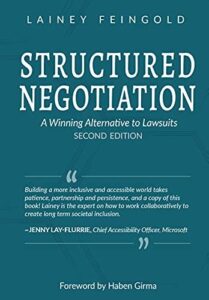
People are hungry for solutions that don’t involve fighting. As any lawyer will tell you, going to court is not just stressful on a personal level, it’s stressful for clients and takes a very long time.
Since most cases involve sitting down at a negotiating table at some point, why not start at a negotiating table before anger and mistrust have an opportunity to take root?
When we have a settlement agreement with a public or private sector organization, no one is found to be guilty, so no one’s accused of violating the law. In the second edition of my book, I share stories about how some lawyers have filed a lawsuit but then use structured negotiation to make the process less confrontational. For example, in a case that was filed against ADP, the payroll software organization, they immediately went to Structured Negotiation and agreed to put the litigation on pause so they could try to work it out, which resulted in a great settlement.
A lot of places are willing, if they’re being approached with a collaborative mindset, to say, “Let’s take this as some feedback about what we could do better.”
How do you encourage organizations to build accessibility?
To answer this question, I have a great image I use in presentations of a cat looking in a mirror and seeing a lion. I use that to say, every organization, public sector agency, small business, sees themselves a certain way.
Our job as culture shifters is to show that digital inclusion fits in with how an organization already sees itself.
If you see yourself as someone who cares about privacy, disabled people can’t have privacy unless they can independently do things on the web such as enter a credit card number or confidentially review health information. When we talk to traffic engineers about accessible pedestrian signals, of course they don’t want people to get hit by a car and die. So we just have to say, “You know those people you care about? Some of them are disabled.”
We show people that the things they already care about include accessibility rights. They just didn’t know it yet. Then it doesn’t feel like such a leap.
Why does it feel like a leap for some organizations?
It took years of advocacy by disabled people to clarify that these rights are civil rights. The reason someone can’t enter a credit card on a website is not because they’re blind, but because the website wasn’t designed properly. The law in the United States gets hijacked into people feeling like, oh, this is some obligation imposed on high and we have to follow another checklist. No, this is simply a civil right. A civil right that disabled people and their organizations fought for. That’s the bottom line.
Either you’re excluding, or you’re including. If you don’t design and develop for it, if you don’t have a policy, you’re excluding people.
And that gets back to the cat and the lion. No one wants to think of themselves as excluding others.
How can people at public sector agencies embrace accessibility?
Don’t think of this as, “Oh no, we screwed up,” but as an opportunity to make things better. You haven’t done it all yet. It’s okay.
I have a quote on my printer that says, “The future depends on what you do today.” The key thing is to start.
Here are five ways to get started:
- Encourage the people who are writing the checks and making the decisions to learn about the topic and understand that accessibility is about inclusion.
- Hire people with disabilities to foster creativity and promote awareness, and create an environment where people can disclose a disability without fear.
- Host a lunch and learn about accessibility, or a series of speakers with different disabilities and always pay disabled speakers.
- Test often to make sure people with limited vision, mobility, or hearing can use your online tools. Know where you are and where you need to be.
- Check for exit information, fix the issues, and celebrate the achievement.
Have the awareness that what you do matters, a roadmap that turns awareness into concrete actions, and know that the end result is going to be better for everyone.
What is the biggest challenge right now around online accessibility?
The thing I’m most frustrated about is one line of code overlays. This is a type of software that claims if you install one line of JavaScript, you will have an ADA compliant website. I see that as a very big threat to accessibility because it basically says, take a shortcut, pay us money we’ll fix it for you. You can’t do accessibility right that way.
Check out overlayfactsheet.com and overlayfalseclaims.com for a huge compendium of articles and other information about these companies.
What’s the biggest challenge in the public sector?
Lack of accessible procurement programs. I’ve been working to get accessibility into the procurement process right from the get go. Even organizations that have accessibility people on board are buying things that are a Trojan horse, bringing in technology that doesn’t work for disabled employees, the public, or customers.
Accessible procurement is all about making sure you have the right language in your RFIs, RFPs, and contracts that define accessibility, establish standards, have systems for testing, and make sure people with disabilities are involved in the whole process.
Just like you have security baked into purchasing, accessibility has to be the same way. We want to make sure as early as possible that the technology and the information that’s being purchased will work for disabled people.
What would you say to a company who’s about to put out an RFP?
On the W3.org website there’s a video on accessibility issues to include in contracts for accessible audio and video media. DisabilityIN has is a resource that I helped write on Questions for Captioning and Transcription Vendors During Procurement Process. For example, if you offer captions, what kind of captions are they? And if they’re AI captions, what’s the accuracy rate? What is the possibility of bringing in live captions?
Also see Peatworks.org, a project of the US Department of Labor, where you’ll find a lot of good resources on procurement as well.
How is the federal government responding?
Check the U.S. Legal Updates page on my site for information about efforts by U.S. federal agencies to ensure digital accessibility. And the new Global Law and Policy page has a section with links to U.S. federal accessibility efforts.
Get tips
Click the graphic below to get Lainey’s top three tips for building a culture of accessibility at your organization.
Learn more
- About Lainey: Visit the Law Office of Lainey Feingold website
- Buy the book: Buy Structured Negotiation
- Americans with Disabilities Act in Public Sector: Read about ADA Title II
